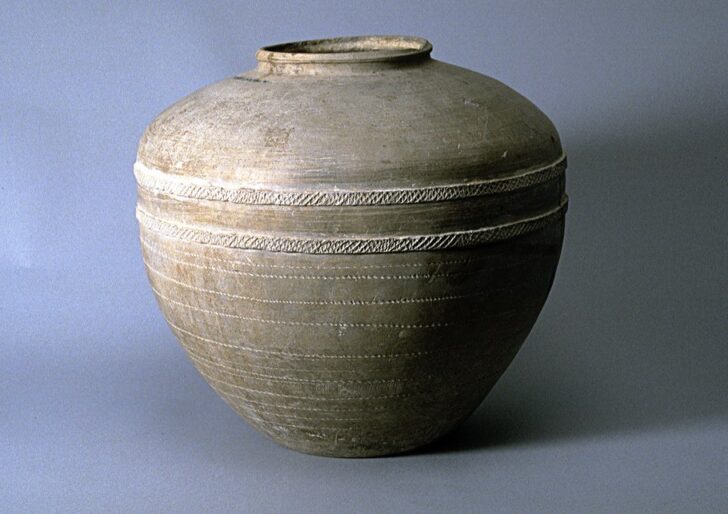Jar
Chinese

Description
Subject Matter:
An unglazed, hard earthenware lobular food storage jar (weng 甕), coilbuilt and finished on a fast wheel, with a flat base, short neck, appliqué, and an impressed rope decoration of the Eastern Zhou Dynasty (770-256 BCE), Spring and Autumn Period (770-476 BCE). Hard earthenware was made by adding a fine sand into the clay body, which allowed it to be fired to a higher temperature, 1,100 degrees Celcius. This resulted in a harder, more vitrified ceramic body. This type of hard earthenware with impressed designs was produced in large quantities during the Spring and Autumn period (Li Zhiyan, 105).
References:
He, Li. Chinese Ceramics: a New Comprehensive Survey From the Asian Art Museum of San Francisco. New York: Rizzoli, 1996. pp. 27-35, 61-69.
Li, Zhiyan. Chinese Ceramics From the Paleolithic Period Through the Qing Dynasty. New Haven, Conn.: Yale University Press, 2010. pp 91-115
Physical Description:
A light gray-buff earthenware weng 甕 jar with a wide globular upper body, slightly angled shoulder and conical lower body on a flat base, and a short narrow neck with rim articulation. There are two appliqué coils around the upper body, with impressed rope decoration, and an impressed wheel or rope decoration around lower coiling on the lower portion of the body.
Usage Rights:
If you are interested in using an image for a publication, please visit https://umma.umich.edu/request-image/ for more information and to fill out the online Image Rights and Reproductions Request Form.